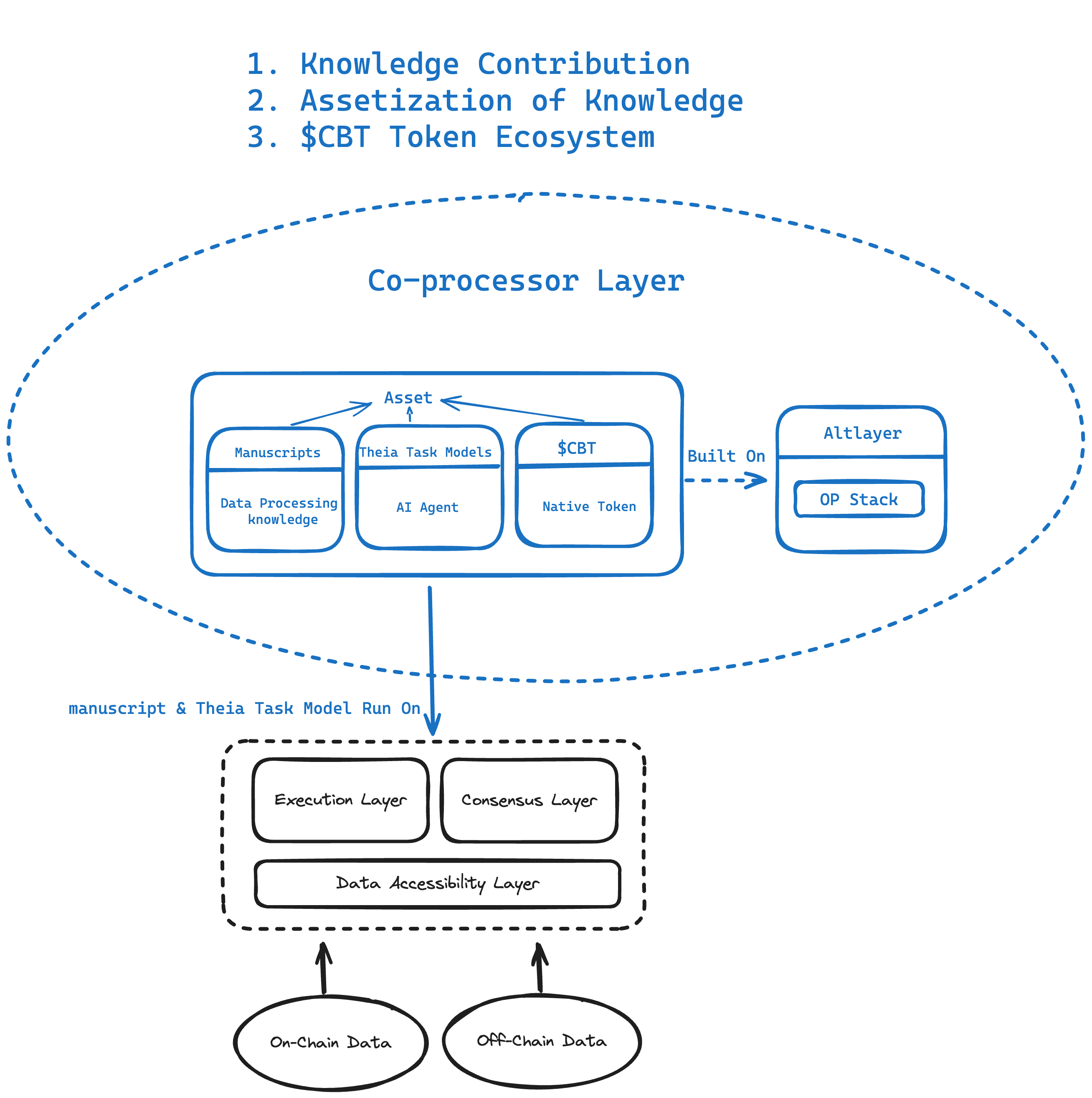Skip to main contentIntroduction
🌐 Chainbase realized early on that with the widespread application of blockchain technology, different application scenarios would generate a large amount of diverse data. Extracting value from these isolated and varied data sets is a challenging problem.
✨ Pre-set data sets cannot meet the customized needs of developers. We need to open up modular and composable stack capabilities to fully unleash developers’ creativity. This creativity will transform into knowledge, which is why we need a Co-processor Layer. This will allow a large number of developers to collaborate around the Chainbase Network, accumulating knowledge and generating collective intelligence.
What is the Co-Processor Layer?
 The Co-Processor Layer of the Chainbase Network is a component designed to facilitate user collaboration in contributing data processing and AI expert knowledge. Its main functions include:
The Co-Processor Layer of the Chainbase Network is a component designed to facilitate user collaboration in contributing data processing and AI expert knowledge. Its main functions include:
- Knowledge Contribution: Users can contribute their expertise in data processing and specialized task models to the Co-Processor Layer. This collaborative environment harnesses collective intelligence to enhance the network’s capabilities.
- Assetization of Knowledge: Contributions in the Co-Processor Layer are transformed into assets. This layer manages the distribution, circulation, and trading of these assets, ensuring contributors are rewarded for their knowledge and efforts.
- $C Token Ecosystem: The Co-Processor Layer revolves around the $C token, which is integral to the network’s incentive structure. It facilitates payments, settlements, staking, and governance, creating a vibrant and dynamic ecosystem.
